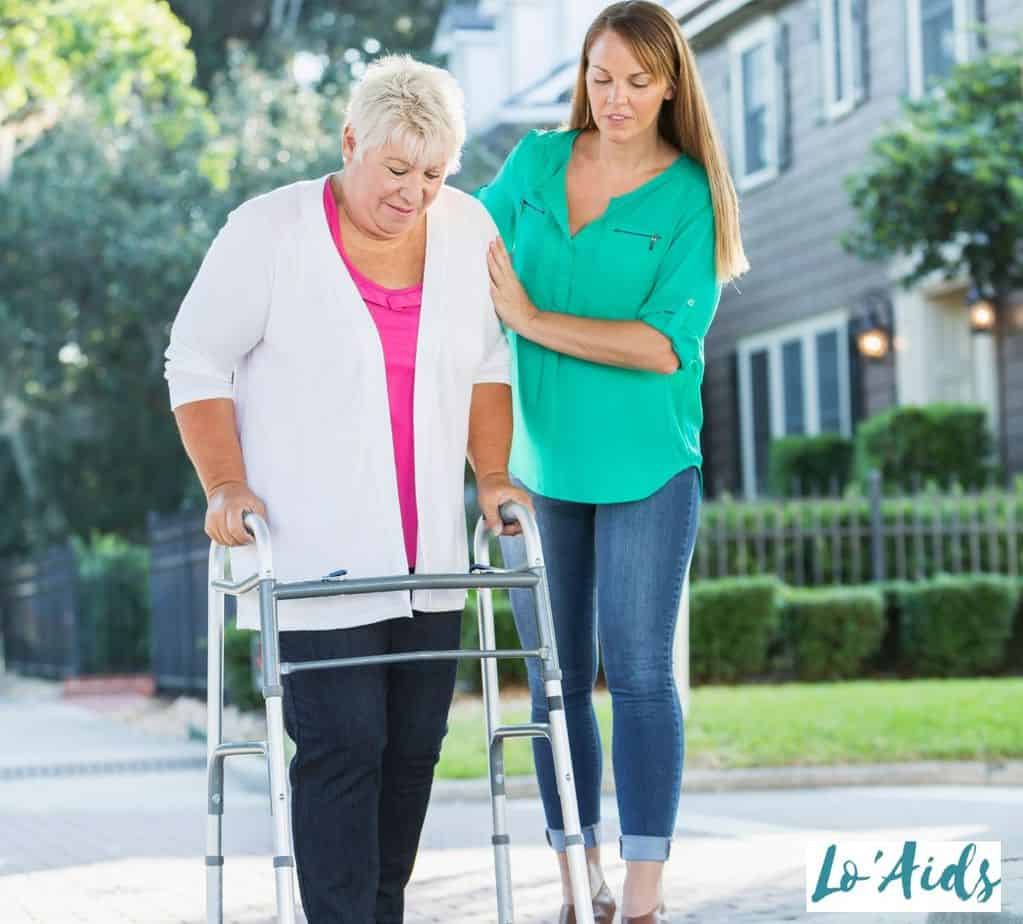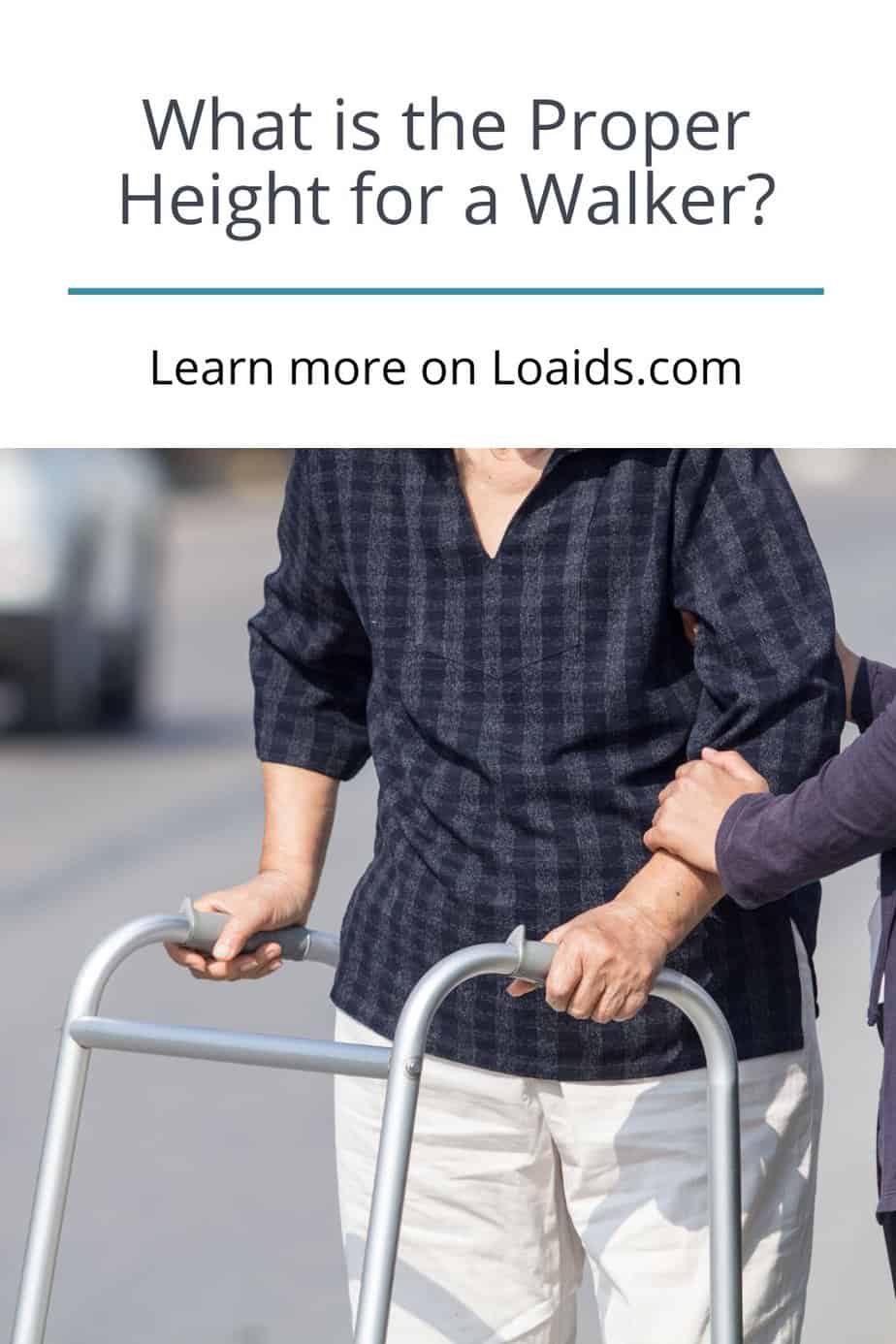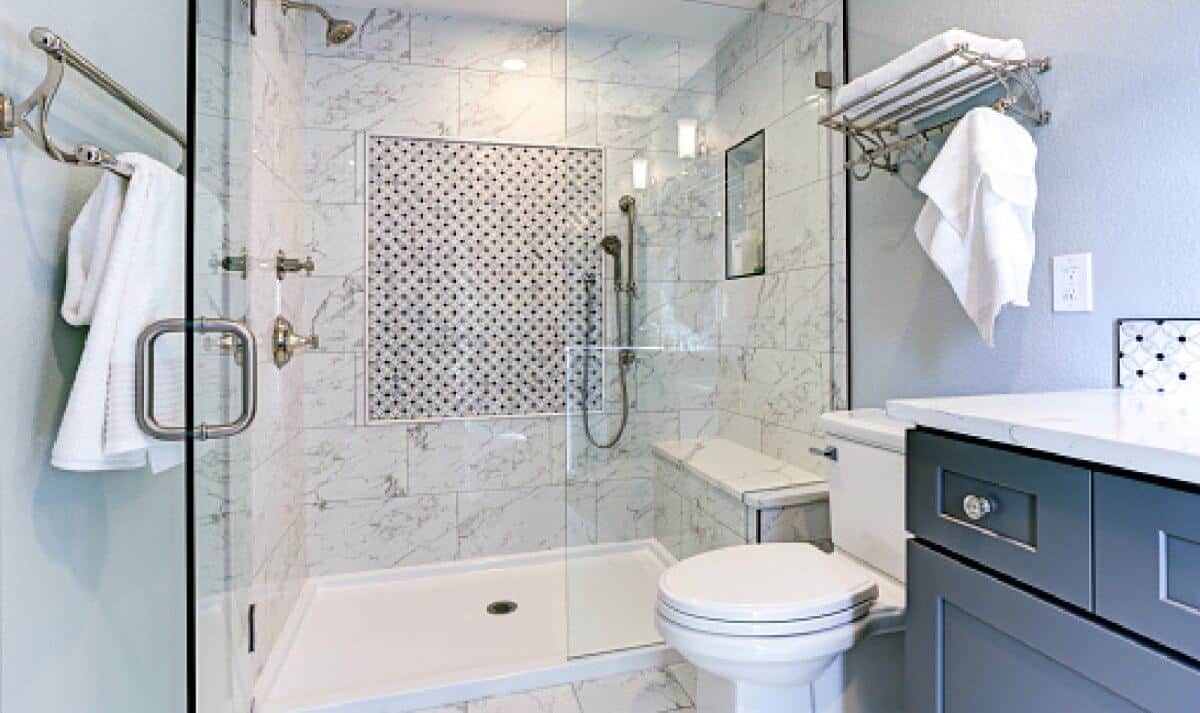What would you consider a proper height for a walker?
We struggled with this when a physical therapist prescribed a walker for my grandpa.
See, our grandpa was quite tall and had a bulky body fast, becoming a problem to carry around! So to reduce the risk of falls, we had to get him a more than tall walker (1).
We came across different walkers with different heights and found the best fit after many trials and errors and wanted to share what I learned with you.
Read on!
Table of Contents
How Do You Determine the Correct Height for a Walker?
Well, it’s simple! The most important parameter you need to know is the person’s height. Determining that will have you well on the way to getting the correct height walker.

People have different heights; my grandpa, for instance, was a towering 6’6″. So, how do you determine the correct height for a walker? And how high should the walker be?
First, it is best if you also consider the person’s and walker’s weight to narrow down the proper height for walker that you need.
This is because lifting heavy items with lots of extra weight isn’t something a senior would particularly enjoy! Of course, elders have lost a lot of the energy they had before.
So you want to make sure you look at walkers the person can use comfortably.
When a health care practitioner prescribes a walker for you, you will need to consider a few things. Here are tips that will help you determine the height of the mobility aid.
The steps are ideal for when a senior buys the walker themselves or sends someone.
Tip 1 – Stand Fully Upright
Stand to your full length ideally with your shoes on. You’ll need a friend or family member to measure your height from head to toe.
Tip 2 – Hand Your Hands Naturally
Hang your hands in a natural position by your sides like you would when walking normally. Keep your shoulders relaxed as you do this.
Tip 3 – Measure Wrists To Floor
Have the friend or family member measure the distance between your wrists’ creases and the floor. The value they get will be the height of the walker’s handle.
Tip 4 – Look For Adjustable Walkers
There are many types of walkers. However, select an adjustable walker that can adjust to an inch higher or lower than your handle height for the best results.
Tip 5 – Ensure The Right Angle
Your elbows should be at an angle of 15 degrees with your hands on the walker’s handles. A degree bend of 15 is comfortable and doesn’t tire you out when using the walker.
Other Considerations
Regular walkers have no wheels and are usually relatively light for seniors with limited mobility to lift easily.
For example, taller or shorter people need the assistive device to be as close to their height as possible.
If you want to know how to choose the right rollator or walker, the below chart with height ranges will help.

The chart will come in handy if you’re buying someone a walker but don’t know their height or waist height.
| Person’s Height (Inches) | Walker Height (inches) | Walker Width (inches) |
| 4’4” to 5’5” | 30.5″ | 21.5″ |
| 4’7″ to 5’10” | 33.5″ | 23.5″ |
| 4’10” to 6’6″ | 36″ to 40″ | 25.5″ |
The width is an essential factor to consider, especially if your home has narrow doorways.
You need to know your actual measurements before buying a walker. We had to return a perfect walker when we found my grandpa couldn’t use it with our narrow doorways.
Extremely tall individuals can put leg extensions on standard walkers and use them like anyone else. We had considered this when looking for my grandpa’s walker. Luckily enough, we found an ideal size.
The proper height for a walker should be between 32 and 40 inches tall. Most standard stand up walkers for elderly people fall within this range.
Getting an appropriate walker could be a problem if you’re taller than 6’6 inches. Standard walkers only cater to people between 4’4 and 6’6″ inches.
If you’re about 7 feet, using any of these walkers will cause a forward-bent posture. Incorrect postures can have profound health implications, especially for a senior.
However, petite walkers can cater to shorter or smaller people. (2) Meanwhile, bariatric walkers are the perfect fit for people who need wide walkers.
The best walker should enable you to walk at a comfortable angle that helps you maintain the proper posture.
How to Adjust a Walker for Height
Walkers, while excellent mobility assistance devices, can also easily result in loss of balance. That is typical where someone hasn’t set their walker to their height. This is why it is important to know what is the correct height for a walker.
Even after knowing the correct height for a walker, you’ll need to understand how to adjust the height to suit you.
Here is how to do that.
Step 1. Stand Up Straight
Stand up straight with each foot flat on the ground and check the position of your wrists relative to the handlebars. The wrist bend needs to be on an equal level with the handlebars.
Now put your hand on the handlebars.
Step 2. Put Hands On Handlebars
With your hands on the handlebars, the elbow bend should be about 30 degrees. If it isn’t, then use the adjustments to ensure that. Adjustable walkers usually have a knob to enable you to do that pretty easily.
If you can’t, then get someone to help.
You’ll have successfully adjusted the walker to your preferred height.
For a better understanding of these instructions, watch the YouTube video below.
There are multiple instructional videos on YouTube to help set the height of a walker. Here is another one that was of much help to me.
Gain confidence in navigating stairs with a walker by watching our informative video, “How To Use A Walker On Stairs!”
FAQs
Do walkers come at different heights?

Yes, walkers do come at different heights. There are walkers for tall and short people alike. That enables them to cater to people of different heights.
What type of walker is best after hip replacement?
Doctor David F. Scott states that front-wheeled walkers are your best bet if you’ve just had hip replacement surgery (3).
#3 What size of wheels is best for a walker?
Though there are over 8 different types of walkers, wheeled walkers are best after such an operation.
Wheeled walkers usually have wheels that are between 6 and 8 inches. However, the larger the wheels, the more stable the walker.
So if you’re buying a wheeled walker, consider one with large wheels.
Conclusion
The proper height for walker varies depending on someone’s height. Therefore, you need to know your height to get the correct height walker.
I hope you now know how to select a walker with the best height for you. If you have more tips on choosing the correct height walker, share them with us below.

Resources
- 1. Li KX, Farrah K. Walkers with Wheels Versus Walkers Without Wheels for Fall Prevention in Older Adults: A Review of the Comparative Clinical Effectiveness [Internet]. PubMed. Ottawa (ON): Canadian Agency for Drugs and Technologies in Health; 2019. Available from: https://www.ncbi.nlm.nih.gov/books/NBK546714/
- 2. Acosta K. A Guide To The Best Walkers For Seniors [Internet]. Forbes Health. 2022. Available from: https://www.forbes.com/health/healthy-aging/best-walkers-for-seniors/
- 3. Scott D. Total Hip Joint Replacement Gait Instructions Walking Recommendations [Internet]. 2011. Available from: https://orthospecialtyclinic.com/wp-content/uploads/2013/04/OSC-Gait-Instructions.pdf





Thank you for this advice. Hoping we never need a walker but its a good idea to know the height.
We got lucky when getting my dad’s walker as the VA did all of this for him. I can see how this information would be very helpful when having to find one on your own.
I will keep this in mind if anyone ever needs a walker. I’d want to be sure we were using it properly.
This is always good to know for those who need a walker. I know a few who use walkers. This is really great information. Glad you have shared it.
I wish that doctors would do this. So many times you see people that are hunched over from using a walker
Thanks for the information, and you never really think about these things until you need it.
I don’t remember setting the height on my walker. It’s tucked away in the closet bc I don’t need it right now. I kept it because they aren’t cheap. I think the nurses set my weaker height up for me.
It would be imperative to make sure the walker is the right height, wouldn’t it? I’m sure if it isn’t just right it’ll do more damage than good over time, thank you for sharing the information!
Wonderful information. I love how detailed your post is, you’ve got all areas about walkers covered.
This is very good to know, especially since my family members are certainly getting older now.
I understand how a walker needs to be just the right height and fit. My aunt uses one now for the first time and it’s been such a huge help to her.
This is so interesting. I’m so happy you eventually found the right walker for your grandpa.
I’ll pass this along to my friend. She is getting her knee replaced next week.